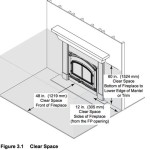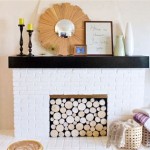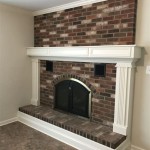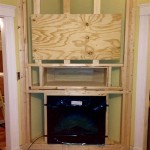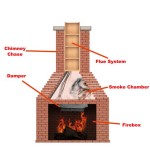Wood Beams For Fireplaces: Aesthetics, Safety, and Installation
Wood beams have become increasingly popular as a design element in fireplace surrounds, offering a rustic, natural, or contemporary aesthetic depending on the wood type, finish, and placement. Their inclusion can dramatically transform a room's character, adding warmth and visual interest above the firebox. However, incorporating wood beams near fireplaces requires careful consideration of safety regulations, material selection, and proper installation techniques. This article will discuss key aspects related to the use of wood beams as fireplace decor, focusing on minimizing fire risks and maximizing visual appeal.
The allure of wood beams stems from their ability to introduce a sense of authenticity and connection to nature within a space. Whether the design aesthetic leans towards minimalist modernity or embraces a farmhouse style, the presence of wood injects texture and visual diversity. Reclaimed wood, in particular, possesses a unique patina and historical character that many homeowners find appealing. New lumber can be treated to achieve a similar aged appearance, further enhancing the desired aesthetic. The choice of wood species, such as oak, pine, or cedar, significantly impacts the overall look and feel. Darker wood tones create a sense of formality and grandeur, while lighter woods contribute to a more relaxed and airy ambiance.
Understanding Fire Safety Regulations
The paramount concern when installing wood beams near a fireplace is fire safety. Building codes and regulations are designed to prevent fires from igniting nearby combustible materials. These codes specify minimum clearances between the fireplace opening and any wood components. It is crucial to consult local building codes and obtain necessary permits before commencing any installation. Failure to adhere to these regulations can result in costly rework, fines, and, most importantly, a significant fire hazard.
The distance between the fireplace opening and the wood beam is critical. The specific clearance requirements vary depending on the type of fireplace (e.g., wood-burning, gas, or electric), the installation location, and the heat output of the appliance. As a general guideline, a minimum of 12 inches of clearance is often recommended for wood mantels above traditional wood-burning fireplaces. However, this is a simplified rule, and a thorough assessment by a qualified professional is essential to ensure compliance with all applicable codes.
Furthermore, ensuring proper ventilation around the fireplace is essential to prevent the accumulation of excessive heat. Restricted airflow around the firebox can increase the risk of the surrounding materials reaching ignition temperatures. Installing a non-combustible barrier between the fireplace and the wood beam can further enhance fire safety. Materials such as concrete, stone, or metal can act as effective heat shields, preventing the direct exposure of wood to high temperatures.
Choosing the Right Type of Wood and Finish
The type of wood used for a fireplace beam affects both its aesthetic appeal and its fire resistance. Some wood species are naturally more fire-resistant than others. For example, hardwoods like oak and maple are denser and therefore more resistant to ignition than softwoods like pine or fir. However, all wood will eventually ignite if exposed to prolonged high temperatures. Therefore, the choice of wood species alone cannot guarantee fire safety; proper installation and maintenance are always required.
Furthermore, the finish applied to the wood beam can impact its flammability. Oil-based finishes are generally more flammable than water-based finishes. Intumescent coatings, designed to expand and create a fire-resistant barrier when exposed to heat, can be applied to wood beams to provide an extra layer of protection. However, it is important to note that no finish can completely eliminate the risk of fire.
Another consideration is the moisture content of the wood. Wood with high moisture content tends to warp and crack when exposed to the heat of a fireplace. Kiln-dried wood, which has been dried to a specific moisture content, is generally preferred for fireplace beams as it is less prone to these issues. Proper sealing and pretreatment of the wood can also help to minimize moisture absorption and prevent future damage.
Installation Techniques for Minimizing Fire Hazards
The installation process is crucial for ensuring both the structural integrity and the fire safety of the wood beam. Proper mounting and support are essential to prevent the beam from sagging or falling, especially under the weight of the wood itself or any decorative items placed on it. Using appropriate brackets and anchors is vital for securely attaching the beam to the wall or fireplace surround.
For added safety, consider using non-combustible materials as spacers between the wood beam and the wall. These spacers create an air gap that helps to dissipate heat and prevent the wood from coming into direct contact with the hot surface. Metal standoffs or concrete blocks can serve this purpose effectively. Furthermore, insulating the wall behind the wood beam with a fire-resistant material, such as mineral wool, can provide an additional layer of protection.
When installing a wood beam above a gas fireplace, the vent system must be adequately insulated and properly installed to prevent heat from transferring to the surrounding wood. Improperly vented gas fireplaces can create excessive heat buildup, increasing the risk of fire. Regular inspection and maintenance of the fireplace and venting system are essential to ensure safe operation.
Before installing any wood beam near a fireplace, it is strongly advised to consult with a qualified building inspector or fire safety professional. These experts can assess the specific installation conditions and provide customized recommendations to ensure compliance with all applicable regulations and minimize fire hazards. They can also provide guidance on selecting the appropriate wood species, finishes, and installation techniques for the particular fireplace and room layout.

Fowey Timber Effect Oak Fireplace Beam Bonfire Fireplaces Stoves

Oak Effect Fire Resistant Mantel And Beams For Your Fireplace

Bideford Oak Effect Fireplace Beam Warehouse

Oak Fireplace Beam Mantel Shelves

Netherton Oak Effect Fireplace Beam Warehouse

Oak Fireplace Beams Mantels Real

Non Combustible Beams And Fake Timber Effect Cast Mantels

Branscombe Complete Suite 1 698 00 Fireplaces Bristol

Oak Fireplace Beams Waney Edges

Why Wooden Fireplace Mantels Are Simply The Best
Related Posts


